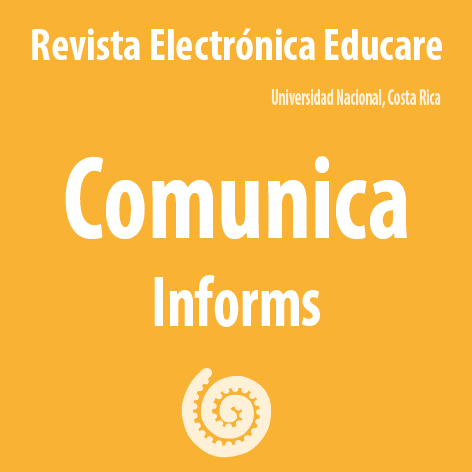Photography as an Intermediary in an Informal Artistic Education Project that Portrayed the Life of Sahrawi women
DOI:
https://doi.org/10.15359/ree.20-2.13Keywords:
Refugee camp, photography, woman, Sahrawi, non formal educationAbstract
This investigation was carried out in one of the most unwelcoming areas of the Sahara Desert, in the argelian Tindouf Refugee Camps where part of the Sahrawi community lives. A photography workshop was held for the women with the aim of allowing their images show the reality around them and work to reweave the social fabric broken, not voluntarily but under imposition. Recovering the public space, through voices and looks, will let us understand, from the perspective and opinions of the Sahrawi women, their longings and feelings, in order that such visual, verbal and textual narratives generate more successful actions to support reality-aware and solidarity programs. In addition, the international community was sensitized about a reality that is present even if it seems unreal and far away. To understand the discourses of the sahrawi women, gender and subaltern studies were considered, and to visualize their voices and creations we focused on educational research from horizontality offered by the Entre Voces (Between Voices) methodology.References
Berger, I. (2003). African women’s history: Themes and perspectives. Journal of Colonialism and Colonial History, 4(1). doi: http://dx.doi.org/10.1353/cch.2003.0005
Carbonell, B. (2005). Las tabibas. Saberes y poderes de las mujeres que, en el Sahara transitan los siglos. Gazeta de Antropología, 30. Recuperado de http://digibug.ugr.es/html/10481/7221/G21_30Beatriz_Carbonell.pdf
Corona, S. (2007). Entre voces … Fragmentos de educación “entrecultural”. México: Universidad de Guadalajara. Recuperado de http://www.sarahcorona.net/lecturas/entre_voces_p1.pdf
Corona, S. (2011). Postales de la diferencia. La ciudad vista por fotógrafos wixáritari. México: Conaculta.
Ewald, W. (2000). Secret games: Collaborative works with children 1969-1999. EUA: Universidad Pennsylvania.
Guha, R. (1996). The small voice of history [La pequeña voz de la hisotria]. En S. Amin y D. Chakrabarty (Ed.), Subaltern Studies IX. New Delhi: Oxford University Press.
Lagarde, M. (1996). Género y feminismo: Desarrollo humano y democracia. Madrid: Horas y horas. Recuperado de http://www.sidocfeminista.org/images/books/00874/00874_00.pdf
Omar, S. M., Murphy, J. M., El Jalil, L. y Hamoudi, E. (2008). El papel de la sociedad civil en la construcción de la paz en el Sáhara Occidental. Barcelona: CEIPAZ. Recuperado de http://www.wshrw.org/Documentos/espa%C3%B1ol/An%C3%A1lisis/Sidi%20Omar_Sahara%20y%20sociedad%20civil.pdf
Organización de las Naciones Unidas (ONU). (12 de febrero de 2002). S/2002/161. Consejo de Seguridad (Párrafo sexto). Recuperado de http://www.arso.org/Olasp.pdf
Pérez, P. (2012) Wilaya [Red social]. Recuperado de http://www.abcguionistas.com/noticias/articulos/pedro-perez-rosado-escribe-sobre-wilaya.html
Rodríguez, I. (8 de febrero de 2009). Hegemonía y dominio: Subalternidad, un significado flotante. [Documento en un blo]. Recuperado de http://blog.pucp.edu.pe/blog/latravesiadelfantasma/2009/02/08/hegemonia-y-dominio-subalternidad-un-significado-flotante-ileana-rodriguez/
Roldán, J. y Hernández, M. (2012). El otro lado. Fotografías y pensamientos visuales en las culturas universitarias. México: Universidad de Aguascalientes y Universidad de Granada.
Roldán, J. y Marín, R. (2011). Metodologías artísticas de investigación en educación. Málaga: Aljibe.
Vasallo, N. (1995). La evolución del tema mujer en cuba. Revista cubana de Psicología, 12(1-2), 65-75. Recuperado de http://pepsic.bvsalud.org/pdf/rcp/v12n1-2/07.pdf
Published
How to Cite
Issue
Section
License
1. In case the submitted paper is accepted for publication, the author(s) FREELY, COSTLESS, EXCLUSIVELY AND FOR AN INDEFINITE TERM transfer copyrights and patrimonial rights to Universidad Nacional (UNA, Costa Rica). For more details check the Originality Statement and Copyright Transfer Agreement
2. REUTILIZATION RIGHTS: UNA authorizes authors to use, for any purpose (among them selfarchiving or autoarchiving) and to publish in the Internet in any electronic site, the paper´'s final version, both approved and published (post print), as long as it is done with a non commercial purpose, does not generate derivates without previous consentment and recognizes both publisher's name and authorship.
3. The submission and possible publication of the paper in the Educare Electronic Journal is ruled by the Journal’s editorial policies, the institutional rules of Universidad Nacional and the laws of the Republic of Costa Rica. Additionally, any possible difference of opinion or future dispute shall be settled in accordance with the mechanisms of Alternative Dispute Resolution and the Costa Rican Jurisdiction.
4. In all cases, it is understood that the opinions issued are those of the authors and do not necessarily reflect the position and opinion of Educare, CIDE or Universidad Nacional, Costa Rica. It is also understood that, in the exercise of academic freedom, the authors have carried out a rogorous scientific-academic process of research, reflection and argumentation thar lays within the thematic scope of interest of the Journal.
5. The papers published by Educare Electronic Journal use a Creative Commons License:
















 The articles published by Educare Electronic Journal can be shared with a Creative Commons License:
The articles published by Educare Electronic Journal can be shared with a Creative Commons License: 



